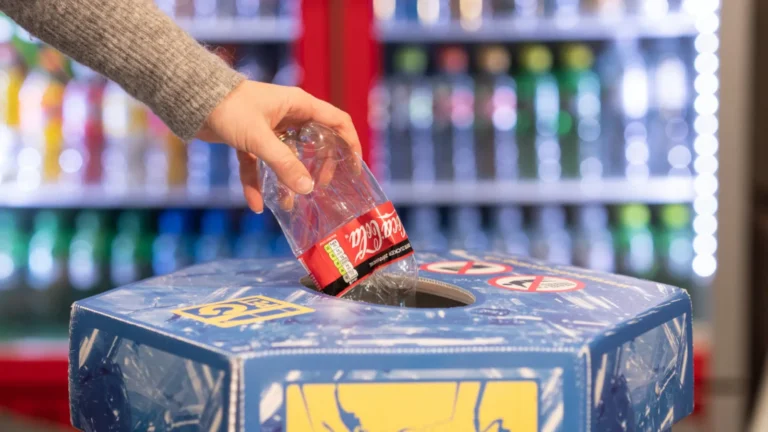Coca-Cola, a giant in the beverage industry, is at a decisive turning point in the face of the exponential increase in its plastic consumption. While the growth of its sales is accompanied by an increase in the volumes of plastic used, the brand is now seeking to respond to the growing pressure of environmental issues.
In 2023, the company used nearly 3.45 million tons of plastic, a 16% increase compared to 2018. This alarming figure is directly linked to the increase in sales, with revenue rising from $34.3 billion in 2018 to $45.8 billion in 2023. The use of single-use bottles has also jumped from 117 to 137 billion units, marking a trend that could continue towards 2030 if no structural measures are taken. Oceana’s report thus predicts that Coca-Cola will reach 4.13 million tons of plastic per year by the end of the decade, with dramatic consequences for the environment, particularly in terms of ocean pollution.
However, in this race for production, Coca-Cola has quickly multiplied initiatives to reduce its ecological footprint. Recycling is a key focus of its strategy. In 2023, the company announced a global collection rate of 62% for its bottles, with the goal of reaching 70 to 75% by 2035. To achieve this, Coca-Cola is investing heavily in recycled plastic, with an expenditure of $959 million in 2022 for the purchase of rPET, the recycled plastic intended to be reused in its packaging.
Nevertheless, the company is going beyond traditional recycling and exploring another promising avenue: reuse. In 2023, nearly 10.2% of Coca-Cola products were packaged in reusable containers, such as glass or refillable PET bottles. This model is experiencing some success, particularly in over 20 markets where the share of reusables exceeds 50%. One of the major advantages of this system is its impressive return rate of 93%, far higher than that of traditional recycling. This reuse model could allow Coca-Cola to reduce its plastic volumes by 15% by 2030.
Another important aspect lies in the carbon impact of the two solutions. The company’s internal analyses indicate that reusable bottles generate up to 47% less CO₂ emissions than single-use bottles. These results are promising, particularly due to the use of renewable energy in washing centers and optimized management of product life cycles.
However, challenges remain numerous. Recycling, while central to Coca-Cola’s strategy, remains limited by structural constraints. In South Africa, for example, only a fraction of the collected plastic is actually recycled. Of the 68,413 tons collected by the PETCo plant, only 40% was transformed into food-grade PET, with similar results observed in Mexico and the Philippines.
Thus, in the face of these challenges, Coca-Cola seems to have found a balance between recycling and reuse. While recycling continues to evolve, the use of reusable packaging appears to offer a more sustainable solution, particularly to address climate issues and resource management. The lingering question is whether this strategy will be sufficient to meet the company’s sustainability goal by 2030. The coming years will be crucial in determining whether Coca-Cola can truly reverse the trend of plastic pollution while continuing to meet the growing global demand.


